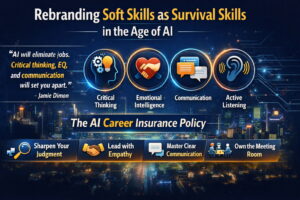I was recently interviewed by my friends at WebCopyPlus. I thought I’d share it with you here…

At a time when everyone with a smart phone and a Twitter account boasts social media genius, digital analyst Brian Solis renews our faith in the existence of intelligent discourse in that realm. Author of Engage!, a comprehensive guide for businesses vying for success in the social web, Solis offers practical advice on how to build a social media strategy and measure its effectiveness beyond the template follower-counting approaches.
Webcopyplus recently stole a few moments of his time to ask some pressing questions on the minds of most businesses trying to optimize their digital reach.
WCP: Is a social media strategy prudent for any kind of business or are some more suited to participate than others?
Solis: At the very least, every company should start with learning. The thing about social media is that it represents the ability to organize and study sentiment, perception, activity, impressions and experiences, and that’s pretty remarkable when we stop to think about it.
Social media didn’t invent conversations and opinions, but it allows us to have access to what people think and share—right now. Businesses and governments have had this in the form of focus groups and town halls, but the resources required to compile the information were archaic. And I’m not convinced that beneficiaries of this insight truly saw the value in its ability to change course. Now we can grab it at any moment.
The thing is that insights are different for each business but many take template approach—Twitter, Youtube, Facebook—but if you listen (not just monitor for name mentions) and extract insights and trends, that should dictate your strategy and what type of content, leadership and channels you use. All of this is dictated by your community and is true for any kind of business. You have a choice… do you let it touch you to do something significant or do you stuff that information into a report to demonstrate a change in activity?
WCP: How much time should a company allocate to social media engagement?
Solis: This is the question of the moment—what is the right mix of budget, resources and time? The answer lies in what you see and also the position you want to take in social. Showing up is not free and the time you invest in it only reflects what it is you sought to get out of it in the first place. But in order to build a dedicated and active community it takes a significant commitment.
Start with a pilot program where you set out to accomplish something and see how much time and resources it takes to make that happen. We see so many companies bypassing that step and they find it difficult to measure success because they’re not sure what they’re doing, or what customers are getting out of the experience.
WCP: Should a business have one employee dedicated to a social media campaign, or to spread the responsibility amongst everyone?
Solis: It’s all dependent on the goals. A business, at the very least, should have a community manager and/or a social strategist; someone who is responsible for the greater conversation, with their ear to the ground, but also connected internally to design and execute.
I’m a believer in this… when you study outside activity, it applies to many departments—from sales to customer service to marketing to HR. Any division that’s affected by outside activity should also have a counterpart for the social strategist internally and make sure they are engaged and they learn and stay connected.
WCP: How can you avoid falling victim to the time-sucking properties of social media while still using it effectively?
Solis: You can lose yourself in anything. But, everything starts with establishing goals and objectives. Many businesses aren’t really thinking about it on a deeper level. Businesses are looking at goals from the standpoint of number of followers, but in reality those are soft metrics that don’t really show or demonstrate whether we’re on the right track.
I’m a firm believer in tangible goals. Do we want to generate leads? Hire new employees? Set out with objectives and build programs around that to see the impact you’re having—then you can assign time, resources, and budgets to it. We find that over time businesses will be required to have a full-time person and at least part-time in different departments. Then, as you see the ability to meet goals and objectives, you can make the choice to expand.
WCP: What companies are doing it right? Can you provide an example?
Solis: Dell was famous for starting in social media for customer service to address negative sentiment. They used it to address customer complaints and over time they’ve completely socialized all of their departments. Through Idea Storm, for example, they built products based on what people were saying and built infrastructure across the organization to deal with this feedback. Then came Employee Storm—where employees can say what they want to learn, see and do, that they aren’t getting internally. Almost every aspect of Dell’s business is now built around the principles extracted from social media and corresponding behavior.
WCP: Where do you see social media engagement trends in business heading? How do you think it will change in the future?
Solis: Social media will become a lot smarter and at the same time it will become a lot more natural. Not everyone within the organization is using Facebook and Twitter everyday and certainly not to the point where they are proficient. It’s becoming like email—it’s how you engage with customers, coworkers and peers. What goes in those channels is what matters, not the channels individually.
The real power is less about the technology and more about the change in culture that is going to affect every business. Today, we have a permeating culture of command and control where you operationalize departments and tune them to be more efficient, dictating messages that are pushed into the market. This is counterintuitive to social media, which opens up the doors internally and externally, creating a culture of change and collaboration. A business becomes more social when it has value to add and something to learn and changes as a result.
WCP: How can a business prepare for its strategy to evolve with the quickly changing social media landscape?
Solis: Social media will have to cross over from social to the executive layer, which is the real challenge. Social won’t win by itself. It has to align with a broader initiative within the organization. Social media right now is in marketing or service mostly. Recent Altimeter Group studies run by colleague Jeremiah Owyang found that 50% of SM is run out of marketing department. You can’t change a business if SM is already siloed in one department.
It takes a change agent to recognize what is taking place out there and translate that into executive speak. How do we apply all of this to sales or information that will directly or indirectly impact the bottom line. How will we specifically gain a competitive advantage? It becomes less about social media and more about becoming a better business overall. We need to translate this to the executive layer and demonstrate the business value.
Connect with Brian Solis on Twitter, LinkedIn, Facebook
![]()
___
The New ENGAGE!: If you’re looking to FIND answers in social media and not short cuts, consider either the Deluxe or Paperback edition

___
Get The Conversation Prism:






This is the crux of it. Social media is too often siloed in marketing or communications or wherever. But, as you write, it must cross the chasm to the strategy of C-Suite. It’s happening, the wave is building. But not fast enough for some of us!
Scott, yes!!!
I’m intrigued by the fact that Dell is constantly cited as an example of a firm that really gets social media, and yet everyone I know (including my wife who owns a Dell) thinks their product and customer service is going downhill. Where is the disconnect? Why isn’t a model social media strategy making an impact in those areas? There is a lesson here. What we learn and do in social media must improve our product or it’s of little use.
Dan, I couldn’t agree more. I believe that’s the path that Dell is on as well. They do have teams looking at product design and product experiences based on the intelligence they’re gathering. But your comment should serve as advice to all businesses.
Just shared this with the smartest people I know– very interesting & so practical!
I agree with your point, that business should learn and then run a small pilot — a POC if you will.
I find that a number of companies dive into social by creating Twitter, Facebook and LinkedIn accounts because “that’s where everyone is.” Unfortunately, the business then falls prey to social indecision and is marred by social inexperience. The brand is simply ill-equipped on how to use these channels. The brand can actually do more damage than good since it does not understand how to engage its customers nor how to use these channels in concert with the established business goals.
We work exclusively in the restaurant social media space, and are finding that engagement on the social web is merely and extension of the guest experience. Our clients are interested in serving their fans with the same sort of professionalism and care that they would extend during an actual in-store exchange. Comments are moderated and addressed, feedback is acknowledged, and meaningful content is created and distributed.
So, for the clients we serve, the goal is to maintain a leadership position in all areas where their brand is being discussed. Whether that means taking high quality digital images of all the dishes on the menu and posting creative/conversational Facebook content around them, or producing short-form video of the cocktail program, the result is the same: the restaurant radiates a sense of excitement and passion, and leads all online conversations with an energy that is contagious and worth talking about.
very well put “The thing about social media is that it represents the ability to organize and study sentiment, perception, activity, impressions and experiences, and that’s pretty remarkable when we stop to think about it.”
I agree with what you said about using social media to better your overall business. While marketing remains the primary focus of what most companies are using social media for, it can also be very useful for customer service, competitive research, and networking with other media/industry influencers. Nice post.
Oops, misread the post – so when my first comment goes live (currently in moderation), the first point is moot (well, for this post, anyhoo, not for others who say it is free). Sorry. 🙂
Danny…thank you for your comments. For the record, any comment that includes a link goes into moderation by default. I’ve approved just so that we can show how dialogue here is real. I appreciate both comments. The key here is nothing is free even if it “is” free. There’s an opportunity cost to everything.
Excellent post. And even though it’s aimed at larger companies, its essence applies to the smallest of all businesses – the freelancer – as well. In fact, it’s even more important for us, since freelancers have a very limited amount of man hours available. And yet, again and again, I see freelancers who spend endless hours with their blogs to be read only by a handful of colleagues, with their twitter accounts that are supposed to bring them professional visibility but end up being private chit-chat accounts, etc. So much time wasted and taken away from their businesses.. they would certainly benefit from having a clear strategy. Why do I need a blog? Who can I reach via Twitter? How can I measure my success? What are my objectives?
I still have to learn a lot in this regard myself but your posts are a great help. Thanks!
Love this post Brian, one of the challenges is the shift social is causing in so many structures. Most executives still run businesses in a hierarchical, delegating to the “appropriate” department, which is often why social is chucked to the marketers – many of who live in direct response – and doesn’t stand a chance. By integrating social with customer service, HR, reputation management, and various other arms of a business, it becomes clear that listening to the customer and your audience, and letting them drive change, is essential. Here’s the fun part for me; after doing this, it becomes clear that the top down structure of most businesses, the social structure within the business, will shift because of this activity and outlook. Ultimately to be social, it has to penetrate your own business as well, not just what you do outside your business, ie Dell and Cisco for example. Suddenly C Executives will need to act like guides on the side, not sages on the corporate stage, and I see that rooted attitude as one of the things currently preventing change. Yet the social tsunami is shifting so many businesses, and ultimately the C level levee will break; to be a social business, you have to practice what you preach.
Thank you for this post Brian- you really have a great way with words and summarizing succinctly the key issues that people want to read about at the moment! Reading the comments I would also be interested in other examples as well as Dell that you think are getting it right at the moment please? Thanks!
It’s an interesting post. I think that you are right, when you say that every business can or even should find its ‘sweet spot’ on the social media and take benefits from it. However I think that most successful in online marketing are the companies, which have well established brand in the ‘real world’. I personally would not think that a given company, starting off exclusively on the social media, can gain great popularity, which would translate to their success in the economic terms. Also, as far as I can see, most of the companies do not seem to have a firm strategy. You said: ‘what goes in those channels is what matters, not the channels individually’, but most of what I see on social media is that there is a general awareness of the need to appear online for any kind of business, yet the mere existence, even if regularly updated, but still with dull content, is probably not enough.
p.p1 {margin: 0.0px 0.0px 0.0px 0.0px; font: 13.0px Times}
I would also predict that social media will become a lot smarter, as you said. I think that social media will provide a platform for an excellent communication, due to the more specialized channels that these social media will facilitate. In this way companies will form virtual communities, focused on their own branch of industry, for example, which will make their business making easier.
To sum up, I believe that social media are just beginning to evolve and we will still need to repeatedly adjust to the offerings of the social media world.
Absolutely! Every company needs to AT LEAST be learning about social media. It plays rapidly expanding role in today’s business world.
As usual – very thought provoking post. I think the last point with regard to the move from social to executive layer is Key and as you state a major challenge. I work with small businesses and the core changes they need to make to engage, adapt and thrive are threatening and “scary”. I like the analogy of “New Wine in Old Bottles” (what most businesses do) – Bottles break wine spills. New Wine in New Bottles (Social Business) – both wine and bottles are preserved.
What a great comment Rick. Thank you for sharing your thoughts…